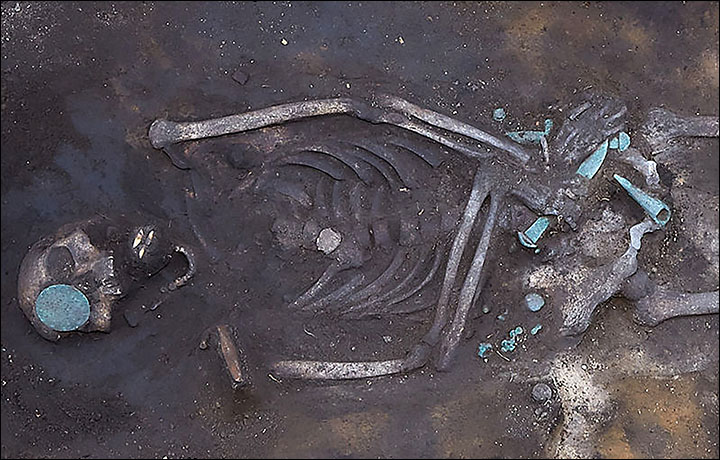|
|
Post by Admin on Sept 17, 2017 19:39:59 GMT
A 2,900-year-old man has been found in Siberia, still clutching a dagger and a knife. The warrior, who lived in the Bronze Age, was also found with a ‘mirror’ in one of his eyes – possibly to illuminate his path to the afterlife – along with a set of earrings.  He was discovered during renovations at a historic building in Omsk. Albert Polovodov, a specialist from the Omsk regional culture ministry, told the Siberian Times: ‘In the right hadn he held a dagger, the blade pointing forwards or upwards, as if he wa sgoing to use it as a stabbing weapon.  ‘In his other hand was a knife, blade down, as he was going to cut, dissect, cut ligaments and so on. Clearly it is an imitation of combat use of these weapons.’ Polovodov added that he was ‘very carefully prepared for the road to another world, assuming that obstacles may exist in his way’.  |
|
|
|
Post by Admin on Sept 19, 2017 19:42:30 GMT
 The extraordinary find of this Bronze Age warrior - ready for combat on his journey to the next life between 2,700 and 2,900 years ago - is intriguing archeologists in Omsk city. Unusual features are the dagger ready for use in one hand, a knife in the other, and a metallic eye patch, or badge, seen as either a mirror illuminating his route to another world, or those who gave him evil glances.  Nearby he had an axe and also some arrow heads. Not all the treasures in his grave appeared ready for battle - the warrior also had some fetching white metal spiral earrings, made possibly from tin or silver.  The remains were found during the restoration of an historical building under Muzeinaya Street in Omsk. The well-preserved skeleton with his arms crossed lay in the trench of a heating pipe made in the Soviet era, according to the regional government's website.  Albert Polovodov, a specialist from the regional culture ministry, said: 'In the right hand he held a dagger, the blade pointing forwards or upwards, as if he was going to use it as a stabbing weapon. 'In other hand was a knife, blade down, as he was going to cut, dissect, cut ligaments and so on. Clearly, it is imitation of combat use of these weapon.' It was as if he 'was very carefully prepared for the road to another world, assuming that obstacles may exist in his way', It indicated that perhaps during his life 'he had to fight - perhaps in battles for territories'.  Maxim Grachev, director of Omsk Museum of Archeology and Ethnography, said five burials had been found, but the four others were destroyed. 'The ideal state of the grave was a pleasant surprise for us,' he said. 'We found a large number of well-preserved items: weapons, jewellery, and other items made of bronze.' The warrior hailed from the transition period from the Bronze to the Iron age. Other burial remains are likely to lie under the buildings on this site, but are not accessible, he said.  |
|